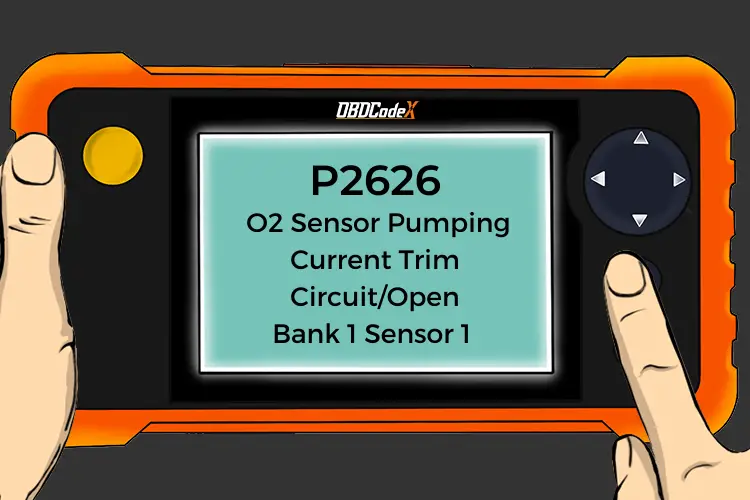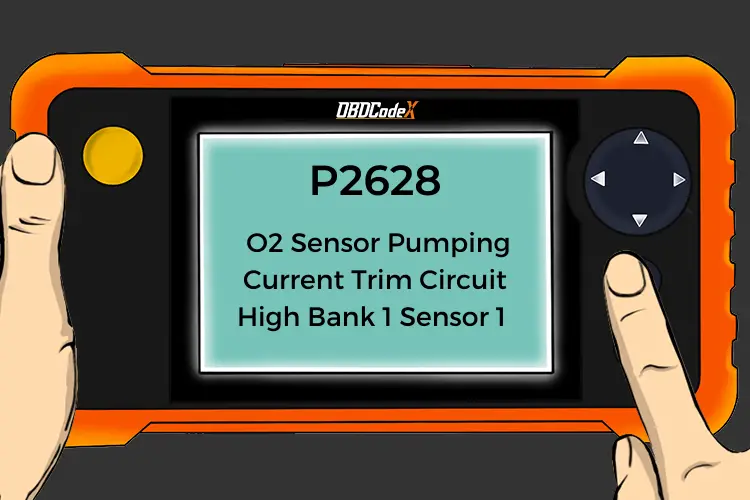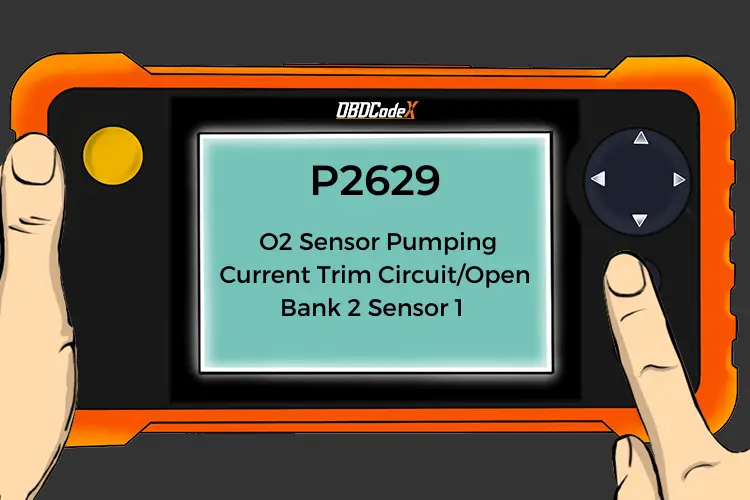P2627: O2 Sensor Pumping Current Trim Circuit Low Bank 1 Sensor 1
Is your scanner showing P2627?
No worries. We'll show you what it means and how to deal with it.
P2627: O2 Sensor Pumping Current Trim Circuit Low Bank 1 Sensor 1
OVERVIEWWhat Does The P2627 Code Mean?
The P2627 OBDII trouble code is associated with the O2 Sensor Pumping Current Trim Circuit. When the Powertrain Control Module (PCM) detects a malfunction within the O2 Sensor Pumping Current Trim Circuit for the number one known as the upstream sensor, six different codes can be set.
These codes are P2626, P2627, P2628, P2629, P2630 and P2631 based on the specific signal that alerts the PCM to set the code and illuminate the Check Engine Light.
Code P2627 is set by the PCM when the O2 Sensor Pumping Current Trim Circuit for Bank 1 Sensor 1 is sending a lower voltage signal than normal. On multiple bank engines, bank 1 is the bank of the engine that contains cylinder #1.
What does an O2 sensor do?
The purpose of an O2 sensor is to monitor how much unburned oxygen is in the exhaust when it exits the engine. The PCM uses the signals sent from the O2 sensors to determine the oxygen levels in the exhaust.
These readings are utilized to control the fuel mixture. The PCM will adjust the fuel mixture accordingly when the engine is burning rich (less oxygen) or lean (more oxygen). All OBDII vehicles incorporate a minimum of two O2 sensors, one before the catalytic converter (upstream) and one after (downstream).
An independent dual exhaust configuration will incorporate four O2 sensors. This P2627 code is associated with the upstream sensors located before the catalytic converter (sensor #1).
What Are The Symptoms Of The P2627 Code?
Symptoms of a P2627 trouble code may include:
- Poor performance that progresses
- The engine will run lean
- The engine will run rich
- Check Engine Light illuminated
- Smoke from tailpipe
- Increased fuel consumption
What Are The Potential Causes Of The P2627 Code?
Possible causes of this code may include:
- Faulty O2 Sensor
- Carbon Buildup on O2 Sensor
- Blown fuse (if applicable)
- Fuel pressure too high
- Fuel pressure too low
- Vacuum leak on the engine
- Excessive exhaust leak
- Corroded or damaged connector
- Faulty or damaged wiring
- Faulty PCM
How Serious Is This P2627 Code?
The severity of this code is moderate, but will progress if not corrected in a timely manner.
How Can You Fix The P2627 Code?
Check for TSBs
The first step in the troubleshooting process for any malfunction is to research the Technical Service Bulletins (TSB’s) for the specific vehicle by year, model and power plant. In some circumstances this can save a lot of time in the long run by pointing you in the right direction.
The second step is to locate the O2 sensor before the catalytic converter. Perform a thorough visual inspection to check the associated wiring for obvious defects such as scraping, rubbing, bare wires, or burn spots. Next is to check the connector for security, corrosion and damaged pins. With the engine running, the visual inspection should include identifying possible exhaust leaks. Based on the fuel consumption and the engine operation fuel pressure tests may be recommended. You should consult the specific tech data to determine this requirement.
Advanced Steps
The advanced steps become very vehicle specific and require the appropriate advanced equipment to perform accurately. These procedures require a digital multi meter and the specific technical references for the vehicle. Voltage requirements will very based of the specific year, model and engine in the vehicle.
Voltage Checks
When the fuel mixture is balanced at about 14.7 to 1 which is normal for most engines to achieve optimum performance, the sensor will read around 0.45 volts. An oxygen sensor will typically generate up to about 0.9 volts when the fuel mixture is rich and there is unburned oxygen in the exhaust. When the mixture is lean, the sensor’s output voltage will drop down to about 0.1 volts.
If this process identifies the absence of a power source or ground, continuity testing may be required to check the integrity of the wiring. Continuity tests should always be performed with the power removed from the circuit and the normal readings should be 0 ohms of resistance unless otherwise specified by the technical data. Resistance or no continuity is an indication of faulty wiring open or shorted and must be repaired or replaced.
Hopefully, the information in this article has been helpful to point you in the right direction to correct the problem with your O2 Sensor Pumping Current Trim Circuit. This article is strictly informational and the specific technical data and service bulletins for your vehicle should always take priority.
Recommended Parts
Below are some recommended auto parts to help you address the trouble code affecting your vehicle and get it running smoothly again:
>>> O2 Sensor
>>> CrocSee 250 Pieces - Car Fuses Assortment Kit
>>> Ucreative 5FT High Temperature Silicone Vacuum Tubing Hose Black (1/8" (3mm))
>>> ECU
>>> WORKPRO 582-piece Crimp Terminals, Wire Connectors, Heat Shrink Tube, Electrical Repair Kit
Note: During the purchasing process, please check carefully whether the part you want to buy fits your car!
Reference Sources
P2627 O2 Sensor Pumping Current Trim Circuit Low B1S1, OBD-Codes.




